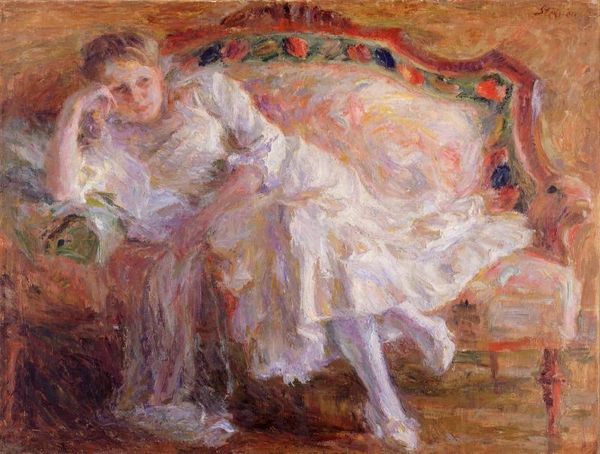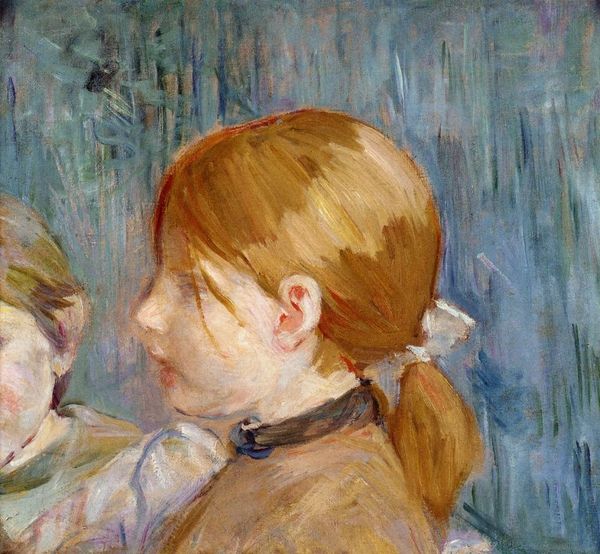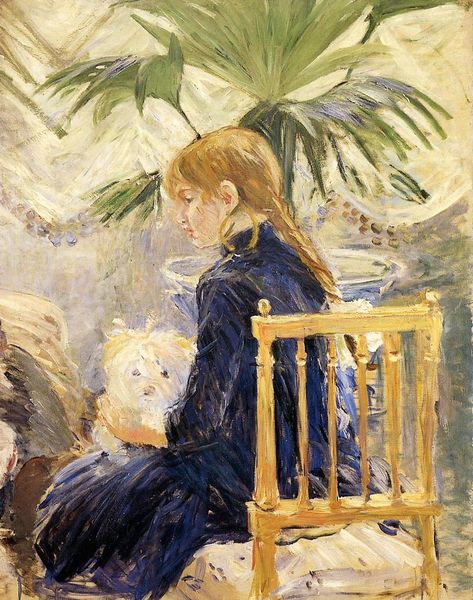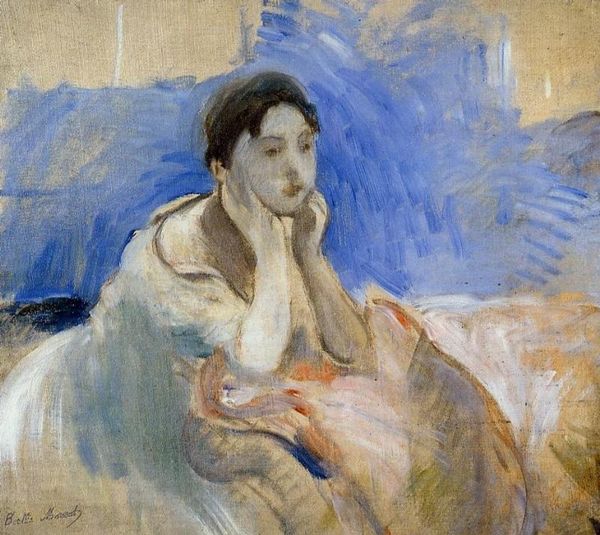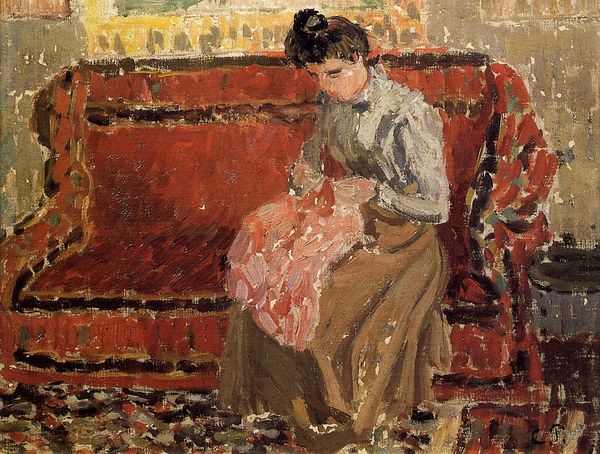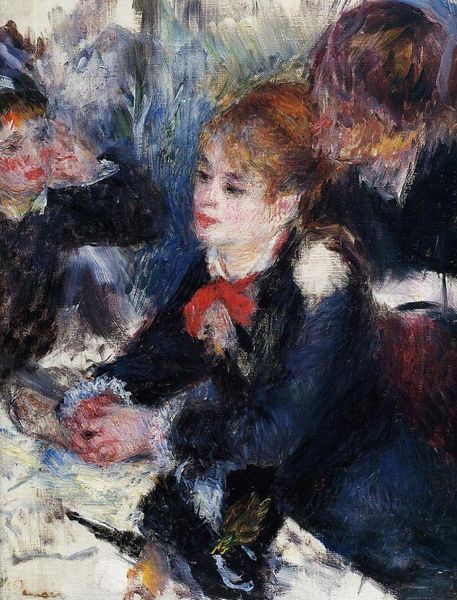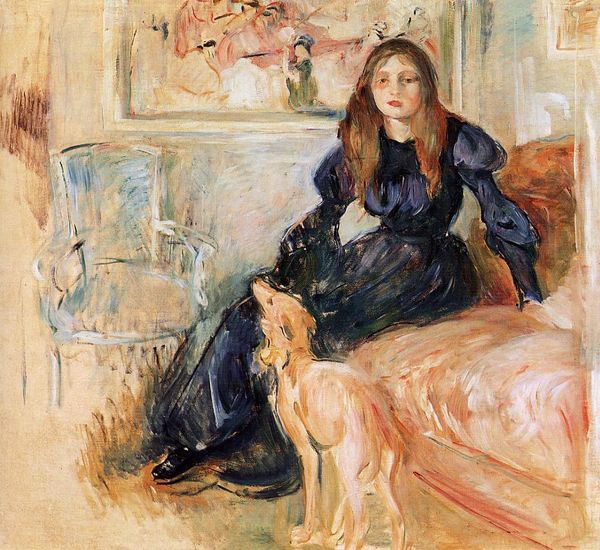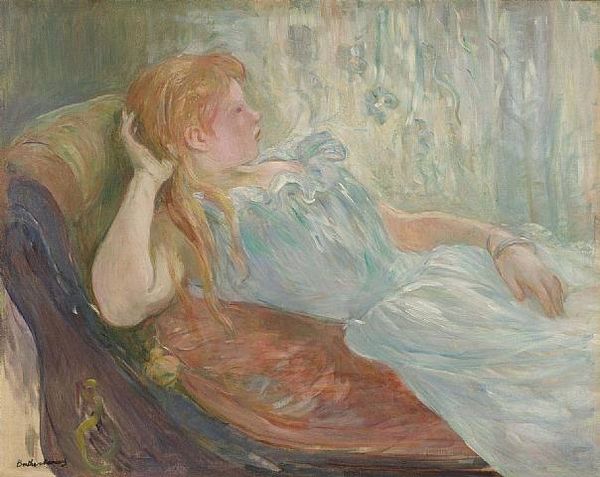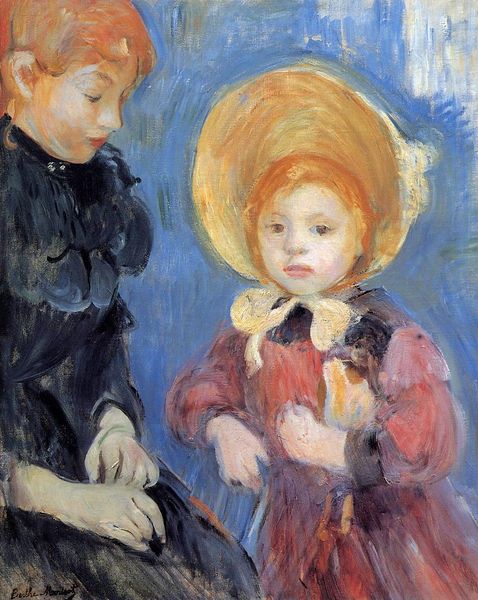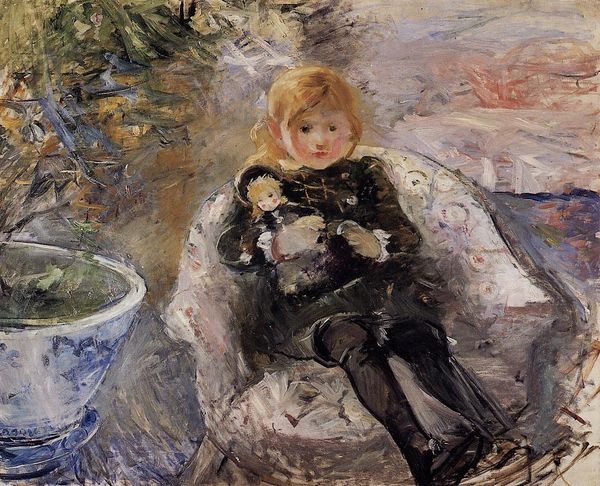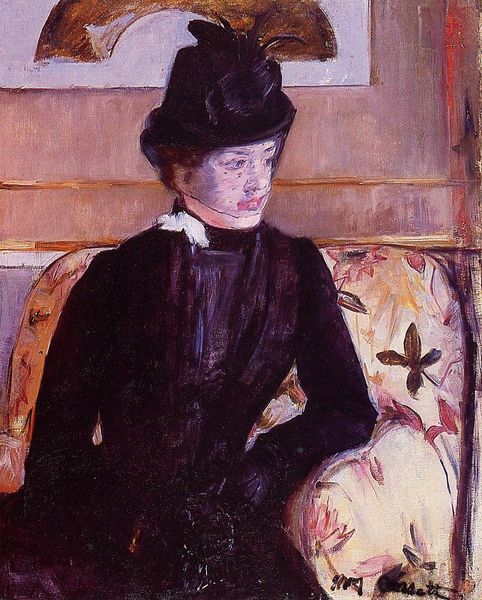
oil-paint
#
portrait
#
impressionism
#
oil-paint
#
figuration
#
oil painting
#
child
#
france
#
genre-painting
#
lady
Copyright: Public domain
Curator: Here we have Berthe Morisot's "Little Girl with a Doll," painted in 1886. The piece is currently held in a private collection. Editor: My first impression is one of quiet introspection. There's a gentle melancholy about the girl, amplified by the soft, hazy application of the oil paint. Curator: Morisot, a key figure in Impressionism, often focused on domestic scenes and the lives of women, a subject matter frequently overlooked or undervalued within the broader art historical narrative. She provides a distinct perspective into childhood through the lens of gender and societal expectations. Editor: Absolutely, and seeing it through that lens is important. The positioning of the girl, almost lost within the cushions of that ornate chair, hints at the limitations imposed upon her. The doll seems to be more of a symbol than just a child's plaything. What do you think about its presentation next to her? Curator: It is indeed significant. It brings to mind feminist theory of the late 19th century, particularly examining the socially prescribed role of women—the pressure to become mothers, caretakers. The doll becomes a proxy, reflecting the future that society envisions for this little girl, and this kind of role-playing becomes indoctrination. Editor: Looking at it historically, women artists like Morisot were battling to exhibit work at the time and she and other artists also tackled issues surrounding representation. Morisot, while finding a degree of success, certainly faced a system biased towards her male peers. The Salon system itself presented constraints. How do you think that impacted her approach? Curator: Profoundly. Considering her gender and her social class in the late 19th-century France, Morisot's work can be interpreted as subtle yet powerful commentary on the confines of bourgeois domesticity and this need of women to define their space and identity. In her subtle art-making choices. Editor: Precisely. Her soft brushstrokes don’t hide a profound sensitivity towards the conditions she was painting within. And, she gives a lasting depiction of this little girl, in a tender yet poignant study. Curator: Thinking about the themes explored in this single frame makes it difficult not to pause. Morisot continues to challenge how we perceive history, childhood and the feminine condition within broader societal structures.
Comments
No comments
Be the first to comment and join the conversation on the ultimate creative platform.

